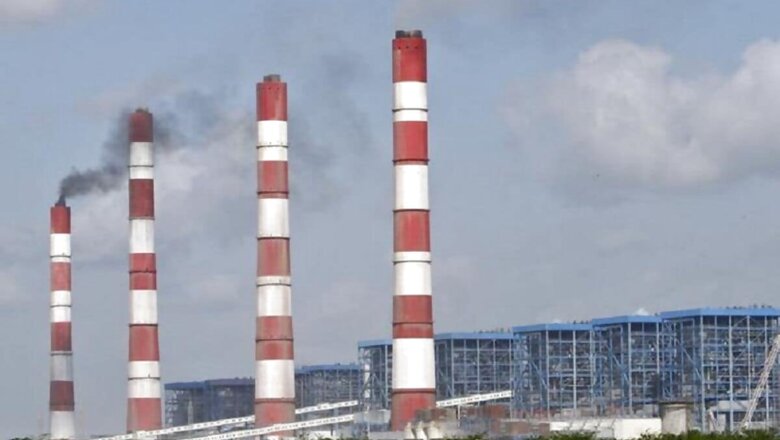
views
Shutting down old coal-based power plants and freezing those under construction can save over Rs 1.45 lakh crore at a time when electricity demand has been hit due to COVID-19, a report said. According to the report by research organisation Climate Risk Horizons released on Thursday, this move will also improve the financial health of the rest of the coal fleet.
With lack of power demand due to COVID-19, and difficulties in revenue collection, power distribution companies' overdues to generators have increased to Rs 114,733 crore, it pointed out. The report estimates that replacing electricity from older coal plants with cheaper renewable sources will reduce the gap between cost of supply and revenue generation for distribution companies (discoms).
COVID-19 has destroyed electricity demand and caused an economic contraction of 23.9 per cent. Making continued investments in outdated technologies (is a) financial suicide. State governments and discoms should take advantage of the demand slump to tap into savings that will accrue from retiring the oldest, least efficient plants and replacing them with cheaper renewable energy, said Ashish Fernandes, the lead author of the report. The report said shuttering old coal plants and freezing under construction plants can save over Rs 1,45,000 crore as well improve the financial health of the rest of the coal fleet.
The report titled 3Rs for DISCOM Recovery: Retirement, Renewables and Rationalisation' looks at 11 major coal power states, which account for over 50 per cent of discoms' overdues. It identifies possible areas for savings and cost rationalisation, starting with the retirement of coal plants that are over 20 years old and are less efficient than newer plants.
According to the report, shutting down 36.5 GW of old coal plants will avoid Rs 18,000 crore worth of capital expenditure that needs to be incurred on retrofits to bring the plants in compliance with the 2015 emission norms. The deadline for compliance is December 2022.
Replacing scheduled generation from these old plants with cheaper electricity, either from new renewables or from the market, would save another Rs 7,000 crore annually ( Rs 35,000 crore over the typical 5-year tariff period), as electricity from most of these plants is on the more expensive side. Our analysis shows that it is far more efficient and cost-effective to shut down these old plants by 2022, rather than spend thousands of crores to retrofit them with flu gas desulfurisation (FGDs) and low nitrogen oxide (NOx )burners," said Fernandes.
Given state governments' precarious finances and the level of stressed assets in the banking sector, incurring debt for additional capex is difficult. These costs would also have to eventually be recovered from discoms and consumers via higher tariffs, he added. The Centre is in the process of disbursing Rs 1,00,000 crore by way of (liquidity package) relief to discoms to enable them to pay their dues to generators, the report said.
This is expected to be a temporary fix, given the lack of progress by discoms in reducing the gap between cost of supply and revenue raised, it added. Surplus electricity generation capacity has seen many power plants struggle with low plant load factors (PLF or capacity utilisation), a situation that most experts predict will persist for the foreseeable future.
The situation isnow exacerbated due to the economic impact of the coronavirus. Retiring older plants may just be the much-needed silver lining, it suggested. The report identifies 14 GW of state-owned plants in the early stages of construction in Bihar, Maharashtra, Tamil Nadu, Telangana and Uttar Pradesh.
Freezing expenditure on these projects would save over Rs 92,000 crore, it added. The report noted that Uttar Pradesh, Maharashtra, Gujarat, Tamil Nadu and Karnataka are paying high fixed costs despite low demand for power.
Rationalising these fixed costs through contract restructuring could save approximately Rs 1,000 crore per annum each in Gujarat, Karnataka and and Tamil Nadu; Rs 2,600 crore in Maharashtra, and about Rs 5,000 crore in UP, based on the latest available tariff orders. Expensive power above Rs 4/kWh can be replaced with cheaper power from renewable energy or existing higher efficiency power plants at Rs 3/kWh or less, it suggested.
Hypothetically, this could generate savings of Rs 55,000 crore per annum in these 11 states, it added.
.




















Comments
0 comment